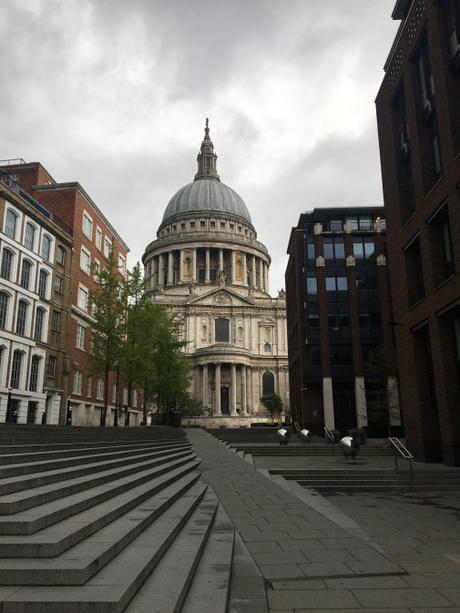
I’ve always loved living in London for its vibrancy; its streets throb with life, in all its strange and wonderful variety, and every outing, no matter how prosaic, offers the promise of some sort of adventure or new discovery. There is always so much to see and do, and so much to be distracted or entertained by. Sometimes it can be overwhelming, but most of the time, I find it a delight; the various views across the city from the many bridges never cease to take my breath away, and I can still never walk past St Paul’s without stopping to admire its beauty. Despite having lived here for most of my life, I have never taken it for granted that I am lucky to live in the greatest city in the world.
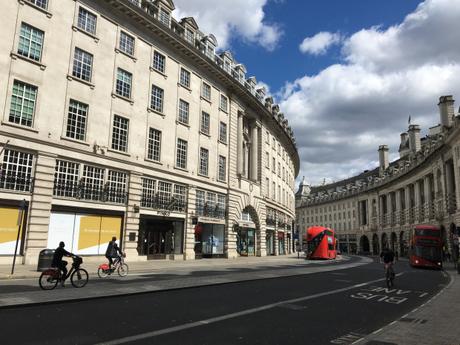
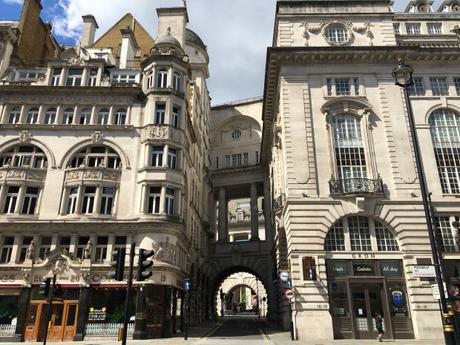
Now the shutters have come down on the theatres and museums, shops and cafes, offices and universities and schools, bars and restaurants, a quietness has settled. There is an almost pastoral air of a summer Sunday over the city; the blank-eyed shops sleeping, the offices shut up, everything holding its breath for a moment until the machinery of commerce begins to slowly creak back into life again. The majestic bridges spanning the river are empty of traffic, and the Embankments, normally thronged, have just a few people strolling along, leaving plenty of room for wandering and thinking. I have enjoyed walking up and down the abandoned thoroughfares of Regent Street and Oxford Street, Piccadillly and Shaftesbury Avenue, actually being able to stop and marvel at the beautiful architecture I normally can’t see through the crowds. There are so many ghost signs and old shop fronts that reveal the history of how these streets evolved over the past couple of hundred years, and it makes for a fascinating study as you walk along – far more interesting than actually shopping, if you ask me! I’ve also loved looking closely at the amazing jumble of buildings, from medieval to modern, in the City, sitting cheek by jowl in a wonderful historical melting pot. Like the rest of central London, normally it’s so crowded in the streets around Bank that you’d have to walk into the middle of the road to get a good look at any of the architecture, so I’ve taken the opportunity to stand and wander where I please to get a good view of the spires and sculptures that ordinarily go unappreciated by the hurried passer-by.
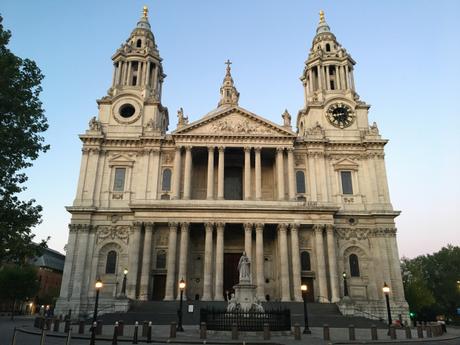
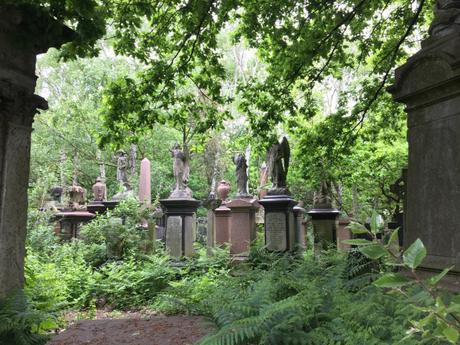
I’ve enjoyed walking through parks I normally avoid due to the tourist crowds; St James’ Park is looking particularly bucolic at the moment, with its swathes of sweet-smelling meadow flowers and flocks of geese wandering around at will, and Clissold Park and Abney Park Cemetery in Stoke Newington are positively alive with blossom and flowers and birds. Around my own flat in Clerkenwell, the birdsong is so loud that I could be living in the middle of a field in the countryside, and at night, I can see the stars clearly for the first time in what seems like forever. This is one glorious consequence of an otherwise terrible situation for so many – the world is healing itself, and many people who had never given it much thought, seem to have developed a new-found love and appreciation for nature. I have never seen so many people enjoying the parks and gardens in London, and so many people out in their own gardens and allotments, actively growing things and taking joy in it. If there were one change I would like to see made permanent in London after all this, it would be a genuine recognition by the government of the importance of nature within cities. I’d love to see more trees planted, more parks created, all new build homes having to have gardens and balconies and communal growing spaces, and more clearly signposted and maintained walking routes across the city, with flowers planted along these routes to make them beautiful, wildlife- rich spaces for everyone to enjoy. What this pandemic has shown more than anything is that people need access to nature for their wellbeing; they don’t need access to fancy coffee and expensive sandwiches. There are so many people trapped in poorly built high-rise flats with no access to outdoor space, and the impact on their mental health of being stuck indoors for weeks with not even sight of a tree or flower from their window has been disastrous. How can we have allowed this to happen?
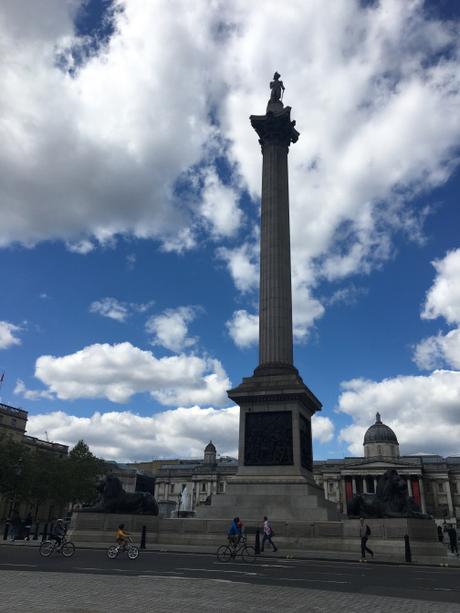
On my birthday this week, I went for a mammoth walk through London as the sun set, stopping to do a little mudlarking at the foot of the Millennium Bridge as I did so. My flatmate and I had a lovely time poking about on the shore, picking up some old pipes and bits of blue and white crockery, before walking along the river, past the Southbank cluster of theatres and concert halls – I had a pang of great sadness as I saw my beloved National Theatre steeped in darkness – and back across the river at the other end, all the time barely seeing another soul. We wandered through Trafalgar Square, Covent Garden, and then Bloomsbury, and marvelled at the beauty of the moonlit streets. We wondered when was the last time London had been this empty, and whether it ever would be again. The weight of history seemed to settle upon us. And then, as we turned onto our street, I smiled at the thought that my block of flats was built in 1949, on top of the rubble of a Georgian terrace flattened by a flying bomb. London has stood for centuries, and endured all sorts of disaster. Each time it has emerged from the ashes and been rebuilt, even better than before. I hope that once this is all over, it will enable us to see what we do and don’t need, what we want to keep and what we want to change. I hope it will serve as an opportunity to make this city an even greater place to live, if we take the chance to rebuild our lives around the pursuit of people’s happiness, rather than profit.
